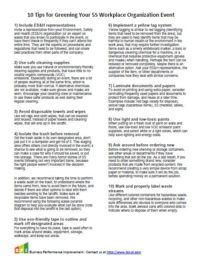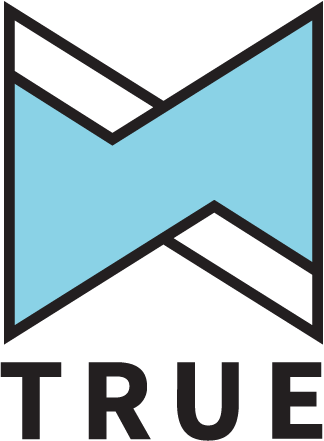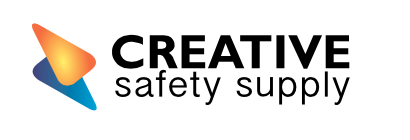Continuous Improvement key to B Corps, Fair Trade and other mission-driven organizations
My consulting firm BPI became a Certified B Corporation (B Corp) in 2018, and I have been reviewing the requirements for becoming a World Fair Trade Organization (WFTO) Auditor to certify organizations to their standards.
Both of these certifying organizations are focused on mission-driven organizations, which is why I was interested in their approach and efforts.
While reviewing the criteria recently, I was reminded about the emphasis each one places on continuous improvement. As a consultant working in the continuous improvement space, I thought I could provide some insight and recommendations on how organizations can improve their continuous improvement approach.
Requirements for Continuous Improvement
Let’s first look at requirements for WFTO…

WFTO organizations are committed to improving the livelihoods of economically marginalized producers of goods by helping them connect with a global marketplace, where they can leverage their business success to move out of poverty conditions. Green Banana Paper creates products from local banana fibers in Micronesia, and they are the type of organization that could pursue WFTO certification.
The WFTO Guarantee System Handbook states that “A member is expected to apply the WFTO Principles and implement the Standard in a diligent and transparent manner and work on continuously improving its Fair Trade (FT) practices.”
Within the WFTO Standards, there is an entire section called the “Improvement Plan” which is where organizations can document actions they are taking to meet or exceed the standards.
Here are some questions that relate to improvement, or are important for a culture of improvement:
- Principle 2: Transparency & Accountability
- 2.3 Communication and Feedback: You have an effective process of internal communication with your workers, Producers and/or members as well as with your trading partners. You collect and consider feedback from these key stakeholders at least every 2 years when making your improvement plan.
- 2.4 Participatory decision-making: You have appropriate participatory procedures to involve your Producers, Workers and/or members in your decision-making, including through representation at the board level.
- Principle 3: Fair Trade Practices
- 3.6 Quality problems and compensation: You have a fair and transparent system, including a communication mechanism and a system of compensation, to deal with quality problems and product cancellation in line with FT objectives.
- Principle 7: Good Working Conditions
- 7.1 Health & Safety Risk Assessment and Management: You have an up-to-date assessment of health and safety risks in your operations and record accidents or work related health problems, analyzing all incidents and taking appropriate corrective action to improve the situation.
- 7.2 Health & Safety Training and Workers involvement: You train your Workers in health & safety and involve them in identifying and addressing risks in their workplaces.
- Principle 8: Capacity Building
- 8.1 Training Plan: You have a plan to build the capacity of your Workers and Producers/Producer Groups (if any) according to their needs and your need as an organization.
- 8.2 Support of FT Suppliers: When buying from Suppliers of FT Products you support them to improve their management skills, production capabilities, leadership, product quality and access to markets, and support them in their efforts to meet the WFTO Standard as appropriate for your scale & leverage as a buyer.
- Principle 10: Respect for the Environment
- 10.2 Minimizing Impacts: You have a written policy to understand and minimize the main negative environmental impacts of your activities with regard to water conservation, protection of water bodies and natural ecosystems, bio-diversity, energy usage, air pollution and waste according to your scale of operations and the severity of your impacts.
- 10.4 Training & Support in environmental issues: You train and support your Suppliers of FT products in minimizing their environmental impacts and promote best production practices with regard to minimizing energy consumption and emissions into water, air, soil or waste.
Next, let’s take a look at the requirements for a Certified B Corporation…

B Corps are for-profit organizations that must prove how they are are performing against key social and environmental metrics (triple bottom line), as opposed to the majority of companies that are only measured on their financial performance. The motto is “using business as a force for good.” Ben and Jerry’s, Patagonia and New Belgium Brewing are certified companies.
For B Corp certification, the following questions are asked, and more points are awarded if the organization can show improvements to these metrics:
- Advancing Social and Environmental Performance: How has your company worked with its stakeholders (including competitors) to improve behavior or performance on social or environmental issues in the past two years?
- Monitoring Energy Usage: Does your company monitor, record, or report its energy usage?
- Monitoring Greenhouse Gas Emissions: How does your company manage its greenhouse gas emissions for at least Scope 1 and 2?
- Monitoring and Managing Water Use: Does your company monitor and manage your water usage?
- Monitoring and Reporting Non-hazardous Waste: How does your company monitor and manage your waste production?
- Reducing Waste: Approximately by what % has your company reduced solid and hazardous waste generation (normalized for revenue changes) over the following periods?
- Managing Product Impacts: Does the company do any of the following with regards to managing the potential impact their products have on customers / beneficiaries? (with possible answers…)
- Company regularly monitors customer outcomes and well-being
- Company has formal program to incorporate customer testing and feedback into product design
- Company has formal programs in place to continuously improve outcomes produced for customers (including reducing negative effects or increasing positive effects)
But how do these organizations implement continuous improvement?
B Corp and WFTO certification don’t specify a formal approach to implement continuous improvement. This is left up to each individual organization to decide. I agree that there should not be a required methodology to follow. But if the organization doesn’t identify and follow a proven methodology, the organization will struggle to create a culture and consistent approach to improvement.
My guess is that most organizations adopt some simple and intuitive approaches by holding regular team meetings, collecting data, making observations, brainstorming ideas, and tracking improvement ideas. These methods can help improve and resolve problems, but are too dependent on management setting up and running the meetings. In addition, the front-line workers are not involved very much. If management gets too busy to have the meetings, the improvements stall.
Lean would be a great methodology to choose for continuous improvement, as the approach aligns very closely with mission-driven organizations.
Lean was derived from the Toyota’s management system, called the Toyota Production System (TPS). That system was developed and refined after World War II, when Japan was rebuilding its society and economy. They received help from American consultants like W. Edwards Deming and Joseph Juran, and learned from the early works of Henry Ford. They took what they learned, and spent the next few decades improving and refining it. When Toyota began taking market share from the Big 3 automakers and electronic manufacturers in the United States in the 1970’s and 1980’s, the world took notice, and have been playing catch up ever since.
Here’s a TV special from 1980 that garnered a lot of that attention. It also includes an interview with Deming and his years of work in Japan.
A simple way to describe Lean is an approach where management coaches and develops your front-line workers so they can become creative problem solvers and increase customer satisfaction. Over the long term, this leads to lower costs, increased worker engagement, and increased productivity.
The traditional approach for improvement is to have experts or management tell workers what to do and how to fix problems, but the burden falls on them to solve all the problems in the organization. Instead, they should ask leading questions to teach the workers how to think and solve problems with their co-workers. This also improves the entire system, not just improving the individual process in isolation. Often times, isolated improvements creates bigger problems somewhere else downstream in the process or at the customer.
The two pillars of Lean are:
- Continuous Improvement
- Respect for People
When I teach Lean, the pillar of “Respect for People” is often a surprise to my students, as it doesn’t fit into the traditional idea of a successful organization. But without respect for the workers and local community, an organization will never achieve their full potential. They need the workers and local community support, and they’ll never get there if they do not feel they have their best interests in mind. In addition, workers must feel safe bringing up problems, as they often fear that problems will lead to blame, and they might get fired as a result.
Deming is quoted in “Out of the Crisis” as saying “I should estimate that in my experience most troubles and most possibilities for improvement add up to the proportions something like this: 94% belongs to the system (responsibility of management), 6% special.” This means that workers should rarely be blamed for problems (only 6% of the time). 94% of the time, management has failed to set them up for success (training, tools, processes, and support).
Within the WFTO Standard, we see respect for people as a critical element in achieving all 10 of the principles:
- Principle 1: Creating Opportunities for Economically Disadvantaged Producers – Poverty reduction by making producers economically independent.
- Principle 2: Transparency and Accountability – Involving producers in important decision making.
- Principle 3: Fair Trading Practices – Trading fairly with concern for the social, economic and environmental well-being of producers.
- Principle 4: Payment of a Fair Price – Paying producers a fixed price by mutual agreement, ensuring socially acceptable wages depending on the location.
- Principle 5: Ensuring no Child Labor and Forced Labor – Adhering to the United Nations (UN) Convention on children’s rights.
- Principle 6: Commitment to Non Discrimination, Gender Equity and Women’s Economic Empowerment and Freedom of Association – Respecting the trade union rights and rejecting discrimination based on gender, religion or ethnicity.
- Principle 7: Ensuring Good Working Conditions – Providing a safe and healthy working environment for producers and workers in line with the International Labor Organization (ILO) conventions.
- Principle 8: Providing Capacity Building – Seeking to develop the skills of producers and workers so they can continue to grow and prosper.
- Principle 9: Promoting Fair Trade – Raising awareness for the need of greater justice in world trade by trading fairly with poor communities.
- Principle 10: Respect for the Environment – Caring for the environment by maximizing use of sustainable energy and raw materials while minimizing waste and pollution.

How to learn more about Lean
If you’re looking for some beginning training on Lean (with some Six Sigma included), check out the FREE course “Lean Six Sigma and the Environment.”
The course is specific to reducing environmental impacts, but these methods have been used to address social and community issues.
The course covers the following topics and approaches:
- How organizations have applied these concepts to their organization (videos)
- What is Lean, Six Sigma and Lean Six Sigma
- How the Lean 7 forms of waste have a negative impact on the environment
- How the Lean “gemba walk” approach can be used to reduce electricity usage
- How Six Sigma projects can be used to reduce electricity usage
- How Lean Six Sigma tools can be modified to incorporate the environment
- Why Lean and Six Sigma will not naturally address environmental impacts
- How to involve your Environment, Safety and Health and Facilities personnel into your improvement efforts
- How Lean Six Sigma can help your environmental efforts go beyond “low hanging fruit” ideas
- Useful Lean Six Sigma Tools for the environment, such as 5S, Green Impact Matrix, SQDC and more!
If you share this course with your workers and management, you can use the certificate of completion as evidence to show auditors that you are making the following progress on these specific elements:
- WFTO
- 2.3 Communication and Feedback
- 2.4 Participatory decision-making
- 7.2 Health & Safety Training and Workers involvement
- 8.1 Training Plan
- 8.2 Support of FT Suppliers
- 10.4 Training & Support in environmental issues
- Certified B Corporations
- Advancing Social and Environmental Performance
- Monitoring Energy Usage
- Monitoring Greenhouse Gas Emissions
- Monitoring and Managing Water Use
- Monitoring and Reporting Non-hazardous Waste
- Reducing Solid and Hazardous Waste
If you are an existing or potential B corporation or Fair Trade organization and would like me to provide a complimentary overview training course on Lean methods to your team, or to discuss ways to get started in your organization, please contact us to learn more!





















